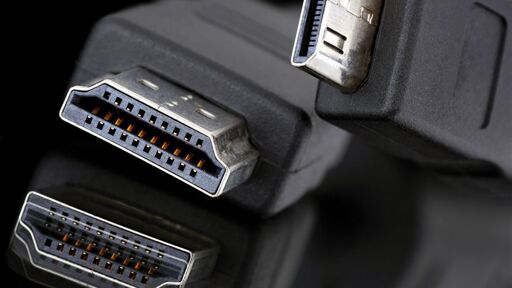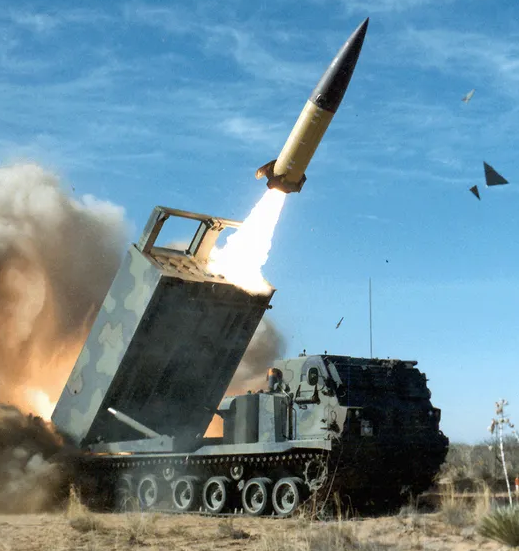Why not use the already open displayPort and make it better.
Lock-in.
This must be for commercial displays where it is beneficial for installation to have power and data over a single cable.
I can’t think why I would want power delivery to my PC monitor over the display cable. It would just put extra thermal load on the GPU.
I think it’s aimed at TVs in general, not computer monitors. Many people mount their TVs to the wall, and having a single cable to run hidden in the wall would be awesome.
I wonder what the use case is for 480W though. Gigantic 80" screens generally draw something like 120W. If you’re going bigger than that, I would think the mounting/installation would require enough hardware and labor that running out a normal outlet/receptacle would be trivial.
Headroom and safety factor. Current screens may draw 120w, but future screens may draw more, and it is much better to be drawing well under the max rated power.
Sound for an 80" screen? Not for home systems.
Most OLED HDR TVs peak at over 300W.
Projector
Even in that scenario it will complicate the setup. Now your Roku will also have to power your TV? No, any sane setup will have a separate power cable for the TV.
I don’t think you’d ever have a peripheral power the tv. The use case I’m envisioning is power and data going to the panel via this single connector from a base box that handles AC conversion, as well as input (from Roku etc) and output (to soundbar etc.). Basically standardizing what some displays are already doing with proprietary connectors.
In wall power cables need to be rated for it to prevent fire risks. This will need to have thick insulation or be made of a fire resistant material.
Nah, it’s for powering the 1000w RTX 6090.
The popular use for power delivery through a display cable is charging a laptop from your monitor; it’s already very common with Thunderbolt or USB-4 monitors. But 480W seems a bit overkill for that.
It would just put extra thermal load on the GPU.
Passing power through doesn’t have to put noticeable load on the GPU. The main problem I see there is getting even more power to the GPU - Nvidia’s top cards are already at the melting point for their power connector.
Passing power through doesn’t have to put noticeable load on the GPU.
I specifically said thermal load. Power delivery always causes heat dissipation due to I2R losses.
That’s what I meant. Compared to the power the GPU is actually using, transmission losses for a pass-through should be negligible. If you have a good way to get it to the card in the first place.
~~Why is that better than usb-c? ~~
Wait… Power the other way. Whoops, I get it.
That already kinda allow this and the actual load is pretty small
Even a big 30 in display is maybe 20 watts
Well, power delivery goes several times that. Laptops are another very useful case for it. It’s nice to be able to just have a single display port and power connector
You can do this to an extent, today
Today I learned DidplayPort 2.1 can carry 240W.
That’s a lot of power! Are there even any devices that use this?
PCs can use >1KW.
I don’t know why you’d power a PC over DisplayPort though. New 8k monitors do go up to 190W, so we could exceed 240W if we try hard enough.
So if you have a beefy psu you should be able to power your monitor off tbe DP?
Or does carrying power limit data throughput?
The way it works for power over Ethernet — and I assume USB power delivery must work the same way — is that it does not reduce bandwidth because they run the power and the signal over the same wires at the same time.
There is a a power injector at one end and a filter at the other end that separate out the high-frequency signal and the DC (no-frequency) power into different wires.
This is essentially the same thing as they’re already doing for multi-frequency stacking on those same wires (and on fiber) to get the crazy bandwidth in the first place. DC power is just one more low (very very low) frequency running on the same stack.
It might? I think USB uses data lanes for power delivery above some point, and I wouldn’t be surprised if DP does the same.
Hi! I actually work at a major electrical connector company, so maybe I can shed some light on this.
I have no idea.
I used to work with electrical engineers, and whenever I asked about details, they’d shrug and say, “black magic?” Checks out.
 Based on this pin configuration, there’s only two dedicated power pins, which isn’t very good for large wattages. The rest are twinax signal pairs separated by ground to reduce crosstalk.
Based on this pin configuration, there’s only two dedicated power pins, which isn’t very good for large wattages. The rest are twinax signal pairs separated by ground to reduce crosstalk.Usually when connectors are designed for power delivery, they’ll use bigger contacts to reduce the contact resistance (signal contacts tend to be small so you can fit more of them in the same space). I’m guessing the original DP connector form factor wasn’t made with such high power in mind, so it would make a lot of sense to use the spare signal pins for power delivery in this case. Running too much power through too few small pins can damage the contacts, by either by instant-welding the contact surfaces or by overheating the connector (see NVIDIA GPUs) ((also high voltages can cause arcing, which even in the best case will seriously degrade any connector)).
Take all of this with a huge grain of salt cause I just learned this stuff like a month ago, and my department has nothing to do with any of it. Just though someone might find it interesting.
A full PC, no, but a set top box definitely yes. And a set top box is plenty of computing power for a thin client, think workstations for accountants.
Is it bidirectional then, like USB-C?
Honestly, I have no idea.
Why accountants specifically?
Any complex data stuff they could need should be done on some database server, the rest of what they’re doing can be done by anything that can deal with minesweeper.
Monitors, although I’m not sure I want my PC PSU powering those as well as everything else.
Running that much power next to a data line sounds like a terrible idea for signal integrity, especially if something shorts to said data lines. It just sounds sketchy or filled with so many asterisks that it’s functional impossible to reach their claimed throughput.
USB standard is up to what, 40Gbps and 240W? That’s pushing the envelope already. We’ll see if this new standard can prove itself, anyways.
Loved automobiles with 4 wheels? Chinese cars have 13! In your face suckers!
Not really that impressive since it seems to be about four times as wide as USB-C
So is HDMI? Smaller connectors aren’t always better, and it’s not like it’s SCART size or something.
Even an 80” tv only uses around 150W, if my research is correct. Surely this must be thinking about massive displays.
If you’re gonna release a new standard, may as well have the headroom for future growth so it’s not outdated too soon in the future.
Now you can use one cable for two 80".
Won’t this heat up like a mother fucker
It depends on the voltage used. If they run 48V which seems to be supported by USB-C EPR. Then the cable has to do the same 5A it’s capable of doing today. Then the heat is the same.
When it comes to their own new connector/cable they can use even higher voltage or more/thicker conductors for power.
Power delivery by itself could be a useful standard for ebike and power station charging (battery to battery charging too). 480w is most I’ve seen, but maybe USB is working on better, or 240w and more flexible/cheaper cables can work. HDMI providing 54v output would be great for most common battery system charging, and dual/triple BMSs for 2x and 3x ports/charging would be awesome.
If it’s physically more stable and reliable than HDMI, then count me in
We already have alternative, it’s called thunderbolt port.
No, we don’t. Apple proprietary nonsense isn’t worth the metal it’s made of.
If it’s not usb-c it’s banned in EU. Because we stopped there and we won’t go forward.
In case anyone is wondering, yes, this is utter nonsense. The EU made USB-C mandatory only as a charger for portable devices like phones, tablets, headphones and mice. That’s all. This new standard, unwelcome as it is, has nothing to do with charging phones so there’s no reason why it can’t be used in the EU.
But let’s not allow measley facts get in the way of having a moan at nothing, shall we? Fucking EU. Forcing us to [checks notes] charge all out things using a single connector, reducing e-waste, and, uh, ensuring there’s lots of futureproofing built-in. BASTARDS.
Please don’t make stuff up.
Other stuff isn’t banned and the law already has allowances for emerging standards.
Actually? I don’t know much about that legislation. Does it really not have room built-in for tech improvements?
I think you could have a second connector in addition to a main USBC.
Honestly we need higher capacity for screen cables for PC. Both HDMI and display port are limiting performance because of their low, 40-80gbps, bandwidth. Their performance maxes out at 4k120hz with uncompressed HDR color. You can’t use 8k screens or multiple 4k screens without lowering quality.
Where I work, everyone has 2 4k screens. You can use two cables to connect them, you know…
And every one of them has either put their scaling up to 150% or simply set them to 2k, because you cannot read a damn thing on them.
More than 4k is a theoretical need for a veeeery small market
I disagree with the more than 4K being a theoretical need thing but, regardless, where I work, every desk has a pair of 4K monitors that connect to the user’s laptop via a single USB-C cable. That cable also connects a keyboard, mouse, gigabit ethernet and, depending on the desk, 10Gb ethernet, multiple cameras and conference audio. The cable also charges the laptop, of course. At the moment that’s mostly done using USB-C docking stations, but we’ve started to deploy monitors that are USB-C native and can be daisychained together.
Graphics cards only come with one HDMI port though. The LG OLED is popular for 4k screens because it ticks all the boxes and is much cheaper than equivalent gaming monitors, but that means it doesn’t support dp.
And it means that you have to upgrade the graphics card just for the cable even if it is still relatively new. The point is that we shouldn’t be held back by just a cable .
Graphics cards come with as many ports as the manufacturer wants them to. My home PC’s GPU has two HDMI and two MiniDisplayPort. Also, there are cheap lossless adapters that will convert between MiniDisplayPort, DisplayPort, HDMI, DVI, etc, etc.
My graphics card has 3 HDMI ports and two DP ports… You cannot use all at once, but three screens are supported simultaneously…














